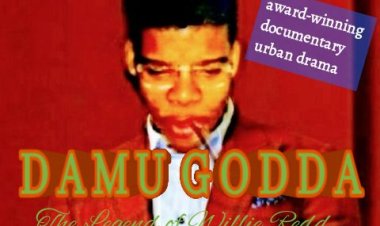Grit Glory and Gangstas A Look at the Worldwide Urban Lifestyle

Defining the Global Gangsta Lifestyle
The global gangsta lifestyle is all about embracing a rebellious and gritty urban vibe. It's a culture built on hip-hop music, street fashion, and pushing back against the mainstream. ###Defining the Look
The signature gangsta style focuses on oversized, baggy clothes like cargo pants, sweatshirts, and bomber jackets in dark colors. Snapback caps, grills, and tattoos are also popular accessories. This distinctive fashion originated in major cities and has since spread worldwide.

The Attitude
The global gangsta lifestyle is about much more than just the look, however. It's really defined by a mindset of toughness, non-conformity, and hustle. There's a sense of surviving and even thriving in harsh, impoverished conditions through ambition and street smarts. Many see gangsta rappers, with their rags-to-riches stories and anti-authority lyrics, as role models.
Going Global
Initially centered in the United States, the gangsta lifestyle has spread globally through the massive popularity of American hip-hop culture. People everywhere have adopted and adapted elements of the style to fit their own communities. For example, gangsta fashion and music have fused with local influences in places like Japan, Russia, Brazil, and South Africa. This blend of American pop culture and regional flair has created a huge, diverse network of urban communities around the world.
While some may see it as a controversial lifestyle, for its followers the global gangsta culture is ultimately about empowerment, identity and chasing your dreams against the odds. From New York to Tokyo, that spirit of defiance and hustle resonates.
The Roots of Grit and Glory Culture
The roots of grit and glory culture run deep, stemming from struggles of urban youth worldwide. Marginalized and often facing difficult circumstances, many turn to music, art and fashion to express themselves.
Hip hop music originated in the 1970s Bronx, spreading a message of overcoming adversity. Early pioneers like Grandmaster Flash and Afrika Bambaataa gave voice to the voiceless and spawned a global movement. Today, hip hop reigns as the world’s most popular genre, its influence permeating all aspects of youth culture.
Street art also emerged from urban roots, using graffiti to claim space and make a statement. While once an underground subculture, street art has gained mainstream appreciation and become a global phenomenon. Artists like Banksy, Shepard Fairey and Jean-Michel Basquiat have inspired countless others to push creative boundaries and bring art to the people.
Urban fashion allows self-expression through personal style. Popularized by hip hop artists and athletes, brands like FUBU, Rocawear and Supreme cultivated a gritty, streetwise esthetic that’s now a multi-billion dollar industry. Sneakers, hoodies, caps and t-shirts are universal symbols of cool adopted by youth worldwide.
At its heart, grit and glory culture is about empowerment. It gives a voice and platform to those often unheard, allowing them to share their vision and realities with the world. While born of struggle, its influence has spread positivity on a global scale. For urban youth, it’s a source of pride, identity and inspiration.
Fashion and Music of the Streets
The urban street lifestyle is expressed through fashion and music.
Clothing
Street fashion tends to be bold, rebellious and pushes creative boundaries. Baggy or skinny jeans, hoodies, sneakers, snapbacks and streetwear brands like Supreme, BAPE and Off-White are popular. Tattoos, piercings and a “too cool for school” attitude complete the look.
Urban fashion also incorporates athletic brands like Nike, Adidas and Champion. Sneakers especially have become a way for youth to express themselves and show status. Rare, limited edition sneakers can sell for thousands of dollars on the resale market.
Certain colors and patterns like camouflage prints, the colors red and blue to signify gang affiliations, or team sports logos and colors also make statements in urban fashion. However, many simply wear what they think looks cool and represents their personal style.
Music
Hip-hop is the soundtrack of street culture. Artists like Tupac, The Notorious B.I.G., Jay-Z, Kendrick Lamar and Cardi B are iconic. Their music talks about life on the streets, struggles growing up in poor neighborhoods, hustling to make money, relationships and lavish lifestyles.
Rap music especially has influenced pop culture with its beats, raunchy lyrics and promotion of violence, drugs and misogyny according to some. However, it has also brought greater awareness of social issues like police brutality, incarceration rates of black youth and economic inequality in inner cities.
Gangsta rap emerged from LA and Compton, popularized by N.W.A. and Ice-T. It focused on gang life, violence and police confrontation. Although controversial, it shaped rap as a powerful voice for the urban experience worldwide.
From the streets to the suburbs, fashion and music continue to spread street culture globally. They represent both the gritty reality of urban life as well as the glory of ambition, hustle and self-expression.

 Admin
Admin 









